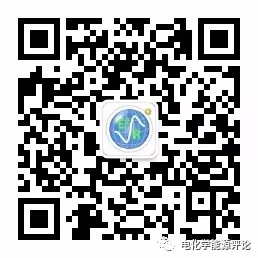博文
吴锋院士团队和Khalil Amine教授团队 EER最新综述︱废旧锂离子电池的回收:当前的工艺和技术
||
最新综述:近年来,锂离子电池(LIB)在消费类电子产品和电动汽车中的应用迅速增长。这种需求的增加极大地刺激了锂离子电池产业的发展,从而产生了大量的废旧LIB。为此,大量的研究都针对环境污染的最小化和电池组件的重复利用而展开。本文评述了当前的废旧LIB回收工艺,包括实验室和工业规模的回收;此外还简要评述了LIB的设计和反应机制,讨论了典型的物理、化学和生物浸出回收过程;并强调回收在提高经济效益和环境保护方面的重要性。此外,由于电动汽车的空前发展,预计在不久的将来会出现大量退役动力电池;因此,本文从经济、技术和环境角度讨论了这些退役动力电池的二次使用。最后讨论了当前回收工艺的潜在问题和所面临的挑战,并揭示了关键回收技术的前景。
图片摘要

锂离子电池回收公司的全球分布。
The Recycling of Spent Lithium-Ion Batteries: a Review of Current Processes and Technologies
Abstract: The application of lithium-ion batteries (LIBs) in consumer electronics and electric vehicles has been growing rapidly in recent years. This increased demand has greatly stimulated lithium-ion battery production, which subsequently has led to greatly increased quantities of spent LIBs. Because of this, considerable efforts are underway to minimize environmental pollution and reuse battery components. This article will review the current status of the main recycling processes for spent LIBs, including laboratory- and industrial-scale recycling processes. In addition, a brief review of the design and reaction mechanisms of LIBs will be provided, and typical physical, chemical, and bioleaching recycling processes will be discussed. The significance of recycling will also be emphasized in terms of economic benefits and environmental protection. Furthermore, due to the unprecedented development of electric vehicles, large quantities of retired power batteries are predicated to appear in the near future. And because of this, secondary uses of these retired power batteries will be discussed from an economic, technical, and environmental perspective. Finally, potential problems and challenges of current recycling processes and prospects of key recycling technologies will be addressed.
文章信息
文章将发表于 EER 期刊 2018 年第 1 卷第4 期,详情请阅读全文,可免费下载。
文章题目:The Recycling of Spent Lithium-Ion Batteries: a Review of Current Processes and Technologies
引用信息:Li, L., Zhang, X., Li, M. et al. Electrochem. Energ. Rev. (2018). https://doi.org/10.1007/s41918-018-0012-1
关键词:废旧锂离子电池 , 回收 , 过滤(浸出) , 二次使用
全文链接:https://link.springer.com/article/10.1007/s41918-018-0012-1/fulltext.html
原文(扫描或长按二维码,识别后直达原文页面):

作者简介

Li Li (first author) is a professor in Beijing Key Laboratory of Environmental Science and Engineering, School of Materials Science and Engineering, Beijing Institute of Technology (BIT), China. Her research interests focus on electrochemical energy storage and conversion technology and the recycling technique and lifecycle analysis for spent secondary batteries. As the principal investigator, Dr. Li successfully hosted the National Key Program for Basic Research of China, National High Tech 863 project, National Natural Science Foundation, etc. She has authored/coauthored over 90 research papers and filed 18 patents and patent applications in China.

Dr. Xiaoxiao Zhang received her Master of Engineering degree from Beijing Institute of Technology in 2012, and completed her Ph.D. under supervision of Prof. Feng Wu from BIT in 2016 with a major research on recycling of spent Li-ion batteries. Her research interests mainly focus on recycling of spent rechargeable batteries, synthesis and modification of electrode materials for LIBs, and catalysts of lithium oxygen battery.

Matthew Li is pursuing his Ph.D. student at the University of Waterloo in the department of Chemical Engineering. He is currently conducting his research work at Argonne National Laboratories as a visiting student. His research interest mainly focuses on nanomaterials for application in energy storage systems such as lithium-ion and lithium sulfur batteries.

Renjie Chen is a Professor in the School of Materials Science and Engineering at Beijing Institute of Technology. His research focuses on electrochemical energy storage and conversion technology. He was a post-doctoral fellow in Department of Chemistry at Tsinghua University and a visiting professor in Department of Materials Science and Metallurgy at University of Cambridge. As the principal investigator, Prof. Chen successfully hosted the National Key Research and Development Program of China, the National Natural Science Foundation of China, National High Tech 863 project etc. He has (co-) authored 168 SCI research papers and filed 65 patents and patent applications.

Feng Wu (corresponding author) was born in Beijing in 1951 and has been working as a teacher in Beijing Institute of Technology (BIT) since 1982 after graduation. Prof. Wu is an academician of Chinese Academy of Engineering, the director of Green Energy Research Institute and the vice president of China Battery Industry Association. His research interests are the new electrode materials and electrolytes for green secondary batteries. As the chief scientist, he hosted the National Key Program for Basic Research of China “Basic Research on New Rechargeable Batteries and Related Materials” since 2002. He published over 500 papers and 45 patents. In 2012, he was awarded the IBA Research Award for outstanding research of battery material and systems for electric vehicles.

Dr. Khalil Amine (corresponding author) is a Distinguished Fellow and the Manager of the Advanced Battery Technology programs at Argonne National Laboratory, where he is responsible for directing the research and development of advanced materials and battery systems for HEV, PHEV, EV, satellite, military and medical applications. Dr. Amine currently serves a member of the U.S. National Research Consul on battery related technologies. Among his many awards, Dr. Khalil is a 2003 recipient of Scientific America’s Top Worldwide Research 50 Research Award, a 2009 recipient of the US Federal Laboratory Award for Excellence in Technology Transfer, and is the five-time recipient of the R&D 100 Award, which is considered as the Oscar of technology and innovation. In addition, he was recently awarded the ECS battery technology award and the international battery association award. Dr. Amine holds or has filed over 130 patents and patent applications and has over 280 publications. From 1998 to 2008, Dr. Amine was the most cited scientist in the world in the field of battery technology.

Dr. Jun Lu (corresponding author) is a chemist at Argonne National Laboratory. His research interests focus on electrochemical energy storage and conversion technology, with main focus on beyond Li-ion battery technology. Dr. Lu earned his bachelor degree in Chemistry Physics from University of Science and Technology of China (USTC) in 2000. He completed his Ph.D. from the Department of Metallurgical Engineering at University of Utah in 2009. He is the awardee of the first DOEEERE post-doctoral fellow under Vehicles Technology Program from 2011 to 2013. Dr. Lu has authored/ co-authored more than 230 peer-reviewed research articles and has filed over dozen patents and patent applications.
期刊介绍
Electrochemical Energy Reviews (《电化学能源评论》,简称EER),该期刊旨在及时反映国际电化学能源转换与存储领域的最新科研成果和动态,促进国内、国际的学术交流,设有专题综述和一般综述栏目。EER是国际上第一本专注电化学能源的综述性期刊。EER覆盖化学能源转换与存储所有学科,包括燃料电池,锂电池,金属-空气电池,超级电容器,制氢-储氢,CO2转换等。
EER为季刊,每年3月、6月、9月以及12月出版。
创刊号在2018年3月正式出版。
欢迎关注和投稿
期刊执行严格的同行评议,提供英文润色、图片精修、封面图片设计等服务。出版周期3个月左右,高水平论文可加快出版。欢迎关注和投稿。
联系我们
E-mail eer@oa.shu.edu.cn
Web http://www.springer.com/chemistry/electrochemistry/journal/41918
Tel 86-21-66136010
关注微信公众号 获取科研动态 |
https://blog.sciencenet.cn/blog-3390413-1141738.html
上一篇:郭少军教授团队EER最新综述︱面向能量电催化应用的金属纳米结构
下一篇:张以河&黄洪伟课题组最新EER|石墨烯制备及其在能量储存与转化领域的综合应用
